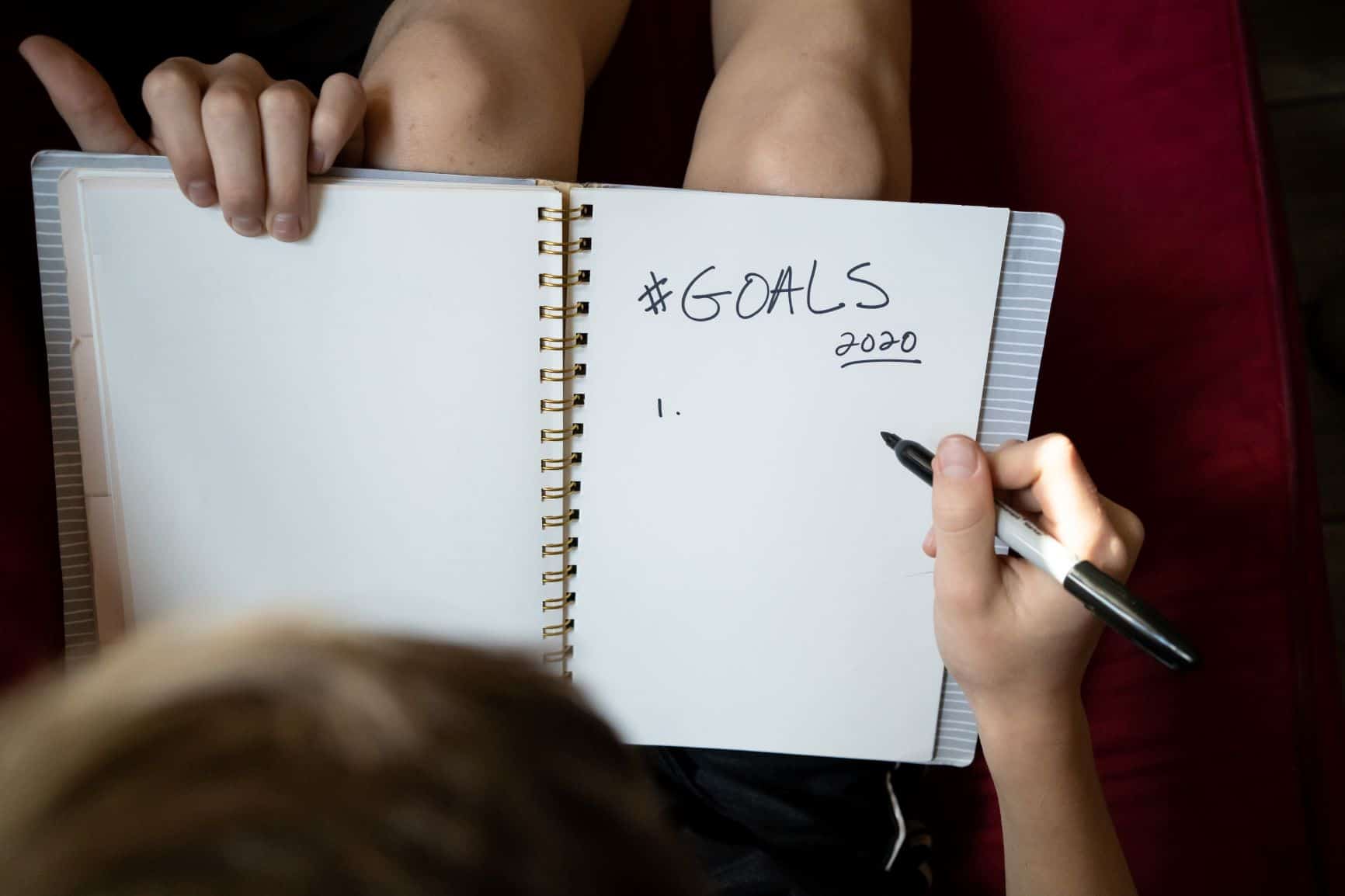Are Your Students Setting Goals? They Should Be.
Goal setting isn’t just a buzzword; it’s a fundamental skill that can set your student on a path to success. Whether it’s dedicating a specific number of hours to study each week or making a daily commitment to jot down tasks in a planner, goal setting is the cornerstone of achievement.
Ready to help your student cultivate good habits and set meaningful goals? You’re in the right place. Below, we delve into 10 actionable tips for effective student goal setting.
1) Ignite the Fire with Motivating Goals
The right goals can act as a catalyst for action. They should be challenging enough to inspire effort, yet achievable enough to maintain motivation. If a goal feels overwhelming, break it down into bite-sized milestones. Remember, the thrill of a challenge often makes the journey worthwhile.
2) Master the Art of SMART Goals
What exactly is a SMART goal? It’s a goal that is Specific, Measurable, Achievable, Relevant, and Time-bound. Let’s dissect this:
-
Specificity: Transform vague aspirations into laser-focused objectives. Instead of aiming to “do well,” strive for “all B’s on the next report card.”
-
Measurability: Track your progress with tangible metrics. Use calendars or apps to monitor study hours, and celebrate each small win.
-
Achievability: Align your goals with your capabilities. If a goal requires additional skills, include learning them in your action plan.
-
Relevance: Ensure your goals resonate with your broader life ambitions. If you’ve never been an art enthusiast, perhaps sketching a portrait shouldn’t be on your list.
-
Time-Bound: Deadlines are your friend. They create a sense of urgency, helping you sidestep the procrastination trap.
3) Put Pen to Paper
Did you know you’re 42% more likely to achieve your goals if you write them down? The act of writing crystallizes your intentions and serves as a constant reminder of what you aim to achieve.
4) Blueprint Your Success with an Action Plan
Setting a goal is just the first step. What follows is a detailed roadmap of tasks that lead to your end goal. Think of it as your personal GPS for success.
5) Power Up Your Goals with Verbs
Verbs are the engines of sentences, and they can energize your goals too. Instead of “getting an A in math,” how about “study diligently to secure an A in math”?
6) Dream Big, Start Small
Long-term goals can seem daunting. The trick is to break them down into manageable short-term objectives. Visualize the end game and reverse-engineer your path to it.
7) Don’t Go It Alone
Achieving goals is often a team sport. Whether it’s parental guidance, a tutor’s expertise, or a friend’s moral support, identify your support network in advance.
8) Pause, Reflect, Adjust
Life happens, and goals may need to be tweaked. Periodic assessments can save you from pursuing objectives that no longer serve you.
9) Anticipate Roadblocks
Obstacles are inevitable. The key is to anticipate them and have a contingency plan. Whether it’s the allure of a party or an unexpected assignment, be prepared to navigate around them.
10) Aim for Progress, Not Perfection
The journey towards a goal is rarely a straight line. Embrace the detours and celebrate the progress you make, even if the destination looks a bit different than you initially envisioned.
Bonus Tip: Make Goal Setting a Joyful Experience
Who says goal setting can’t be fun? Gamify the process to make it engaging. After all, if you’re not enjoying the journey, what’s the point?
Ready to Elevate Your Student’s Goal-Setting Game?
You’ve got the tools and tips; now it’s time to put them into action. Need personalized guidance? Book a call with me, Jamie, your go-to expert in student goal setting and productivity. Together, we’ll craft a strategy that empowers your student to reach new heights.

Does your student set goals?
Setting goals is a great way for students to stay motivated. Some goal setting examples for students are that they could set a goal for studying a certain number of hours in a week or for writing in their planner every day.
Have your students think of good habits that they would like to cultivate and you have your start for setting goals.
Having a growth mindset is especially important for students. One way to foster that mindset is to help your student in setting goals. Here we discuss 10 tips for setting goals with your student.
1) Set goals that motivate
Goals need to be just right not to hard and not to easy or you will put off taking the steps to achieve the goal. If a goal feels too big, break it down into smaller goals. You want your goals to be achievable. If you make a goal to easy you may become bored with it. Humans tend to like challenges and it keeps life interesting.
2) Smart goal setting tips
What is a SMART Goal?
SMART stands for: Specific, Measurable, Achievable, Relevant, and Time-bound.
Let’s break that down.
When we start thinking about goals we may think in broad strokes, or the big picture. A broad goal would be doing well on your report card. The word ‘well’ leaves a lot to the imagination. Hone in on the goal and make it more specific. I want to get all B’s in all my classes on my report card. A specific goal will answer the questions who, what, when, where, and why.
Measuring your goals is a great way to see progress and stay motivated. To measure a goal you may need to set up trackers to measure your progress. If studying for a particular class is a habit you are trying to build you could simply place a check on the calendar for each day you study. Not breaking the chain is a great way to stay motivated.
Goals must be achievable. A goal may not be attainable without further study or training. It is a good idea when setting your goals you think about your strengths and the obstacles and plan for them. If your knowledge is lacking in a specific area take steps to gain that knowledge to achieve your goal. Account for it in your plan.

Relevant goals pertain to what you have going on in your life and align with your big picture goals. If you have never had an interest in art, then setting a goal of drawing a lifelike portrait may not be a relevant goal.
Time-bound means you have a deadline. The goal is achievable in a specific amount of time. Be careful not to set your goal too far in the future or you may lose interest. On the other hand, setting a goal in a shorter time span may add stress. Think about what you have going on in your schedule and set realistic deadlines.
Examples of Areas for Goal Setting:
Academics
Social
Exercise
Healthy Eating
Family/Community
Hobbies
Screen Time
Long Term
Setting deadlines also helps you to beat Parkinson’s Law.
Parkinson’s Law states that work expands to fit the time allotted for it.
Take the summer reading list as an example. Your student had all summer to read a book or two and they wait until the week before school starts to get it done. Speaking from experience on this one.
3) Write your goals down
You are 42% more likely to achieve your goals if you write them down. Why is that? Writing your goal down allows you to become really clear on what you are trying to achieve. It allows you to remember your goals. Write down and post the goals and you are even more likely to achieve them.
4) Create an action plan
You’ve gone through the goal-setting process, but do you really have a plan? If you’ve set up a smarter goal then you may already have some tasks in mind. For each goal you have set write down the tasks you need to achieve to get to the end goal.
5) Use verbs when setting goals
Verbs are action words. When setting your goals be sure to use lots of action words. A verb/noun structure is good to follow. For example, you may have a goal of getting an “A” in your math class. Use a verb to change it to study to get an “A” in math class.
6) Start big then break it down
Reaching your goal will seem difficult if the goal is too big. Long term goals can be broken down into more specific short term goals. Think of the big picture and then work backward. For example, going to a specific college would be a long term goal that you can break down into the smaller goals of taking specific classes, grade point average, volunteering.
7) Know when to get help
Reaching your goals will be tough. You will need help along the way. It may be the help of your parents, a tutor, or a friend. Set yourself up for success by identifying those people or tools that will help you succeed. Create a plan to reach out if the need should arise.

8) Stop and re-access
Stopping and accessing where you are with a goal can save you a lot of time and wasted energy. If you’ve been working toward something but your situation has changed you may need to re-access if the goal is worth pursuing.
9) Identify obstacles
Obstacles will appear. Hello, party instead of studying. Planning for these obstacles in advance will increase your success of succeeding. Create a plan for each obstacle that you identify. You may need to call inf or reinforcements and contact someone from you help me list.
10) Progress not perfection
This is the most important aspect of setting goals. Our lives change, our circumstances change, and we learn something new every day. This means that even the best-laid plans will deviate from their original path. Just because the end outcome doesn’t look exactly like you envisioned you have made progress and that is something to be proud of.
One thing that was not listed was to have fun with your goals. If you aren’t having fun is it really worth it. School is a necessity and no it’s not always fun, but think of ways to gamify what you are doing and setting goals to improve your chances of success.
So now it is your turn to set some goals. Refer to the list below for some areas of focus to get you started.




Thank you very much for this guide, very interesting! I think it’s also important to understand what our life goals are regardless of what society and the thinking of others try to make us believe. We must be sure to choose what we really want and not what others think is right for us. I took this short course on goal setting, there are many downloadable exercises and worksheets to help you define, plan and achieve your goals. Happy to share > https://bit.ly/3qv4IY6